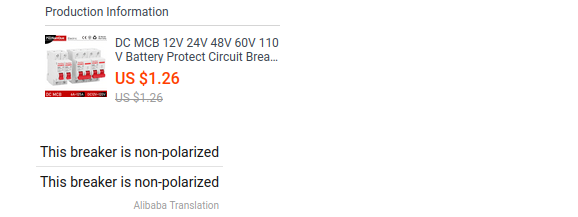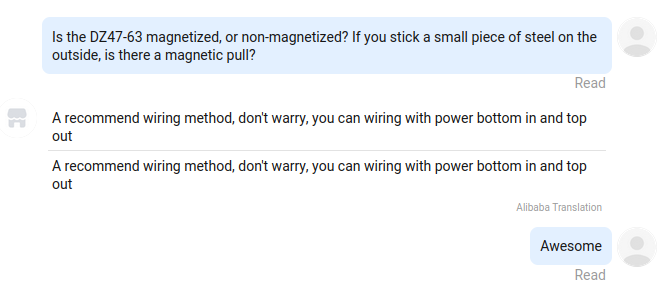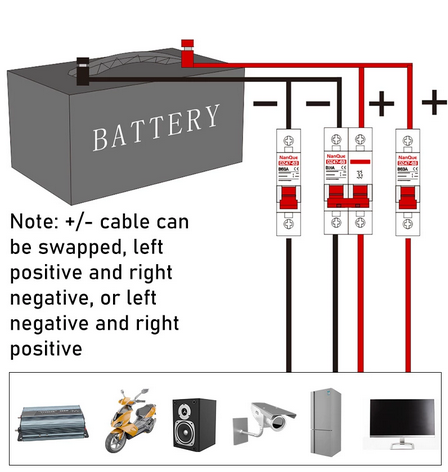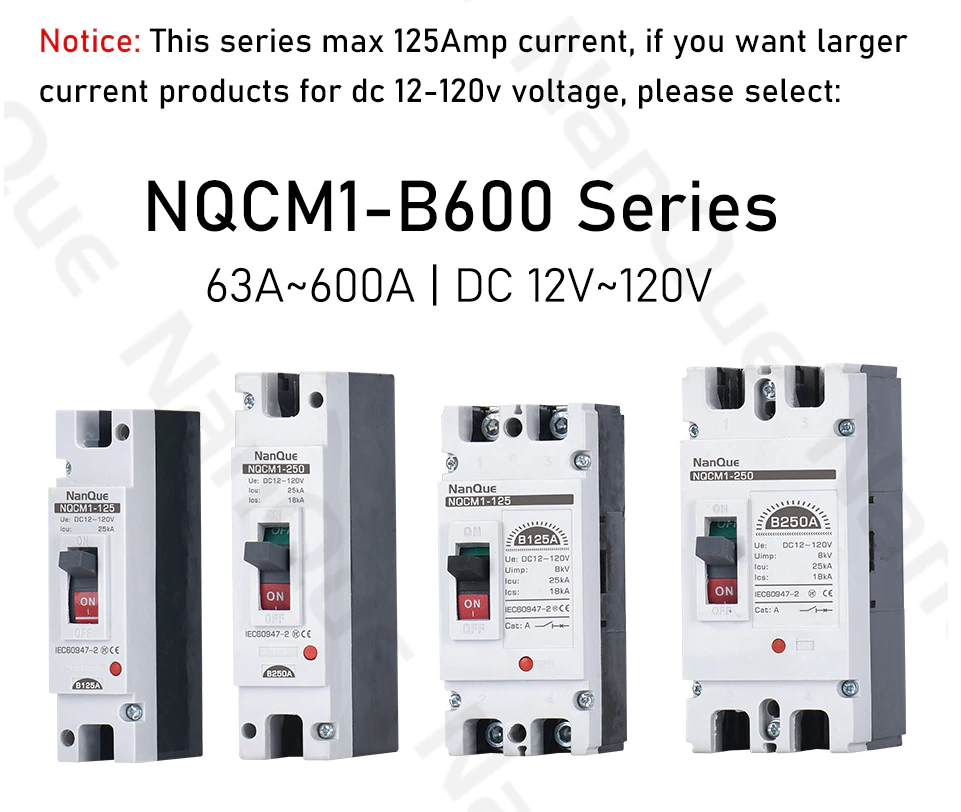I am interested in safely using MCBs (mini circuit breaker) wherever possible in my solar setup; however after reading all the threads and web search matches I can find on the subject, I would like to clarify the following:
Questions
1. Is there a way to test for polarized vs. non-polarized MCBs with a multi-meter or otherwise? If so, please reply with the steps for the benefit of the community.
2. If a MCB is not magnetic, can we automatically conclude that it is not polarized, and the direction of the flow of current is not important, or are there other factors to consider?
I have a number of MCBs I purchased from AliExpress. The Tomzn (trip curve B) and EARU (trip curve unclear) breakers are magnetized, and the TAIXI 150A (trip curve B) breakers are not magnetic.
My setup includes a Growatt 5000ES hybrid inverter (US version), 16s EVE 280Ah battery with 200A JBD BMS and 5000W solar panel array. In addition to the MCB to battery, I will also be using 200A T-Class Fuses.
My Magnetism Tests On Camera
My Preliminary Conclusion
The TOMZN and EARU breakers are magnetic and therefore probably polarized MCBs, only supporting current flow protection in ONE direction, rather than supporting bi-directional current flow protection. These should be used only for one directional current, such as PV in from the solar panels.
The TAIXI are not magnetic, and therefore probably not polarized MCBs, and can be used for bi-directional current, such as between a battery and and a hybrid inverter device. Please correct me if this is wrong.
I love the clean DIN rail mount option rather than other ugly form factor switching methods, but will not use this setup if it is unsafe. I'm hoping this thread can bring accurate responses and safety to the community at large.
I have recently been in touch with Nanque Electric Store on AliExpress, and they are assuring me that their DZ47-63 series breakers (DC12-120V) and NQCM1-600 series breakers (DC-12-120V) are non-polarized, and support bi-directional current protection from battery to inverter. If this is true, they could be a good options.






From the DZ47-63 product listing


References:
Questions
1. Is there a way to test for polarized vs. non-polarized MCBs with a multi-meter or otherwise? If so, please reply with the steps for the benefit of the community.
2. If a MCB is not magnetic, can we automatically conclude that it is not polarized, and the direction of the flow of current is not important, or are there other factors to consider?
I have a number of MCBs I purchased from AliExpress. The Tomzn (trip curve B) and EARU (trip curve unclear) breakers are magnetized, and the TAIXI 150A (trip curve B) breakers are not magnetic.
My setup includes a Growatt 5000ES hybrid inverter (US version), 16s EVE 280Ah battery with 200A JBD BMS and 5000W solar panel array. In addition to the MCB to battery, I will also be using 200A T-Class Fuses.
My Magnetism Tests On Camera
My Preliminary Conclusion
The TOMZN and EARU breakers are magnetic and therefore probably polarized MCBs, only supporting current flow protection in ONE direction, rather than supporting bi-directional current flow protection. These should be used only for one directional current, such as PV in from the solar panels.
The TAIXI are not magnetic, and therefore probably not polarized MCBs, and can be used for bi-directional current, such as between a battery and and a hybrid inverter device. Please correct me if this is wrong.
I love the clean DIN rail mount option rather than other ugly form factor switching methods, but will not use this setup if it is unsafe. I'm hoping this thread can bring accurate responses and safety to the community at large.
I have recently been in touch with Nanque Electric Store on AliExpress, and they are assuring me that their DZ47-63 series breakers (DC12-120V) and NQCM1-600 series breakers (DC-12-120V) are non-polarized, and support bi-directional current protection from battery to inverter. If this is true, they could be a good options.






From the DZ47-63 product listing


References:
- http://greenforcesolar.com.au/wordp...of-Double-Pole-DC-Breakers-LVL2-131210-v2.pdf
- https://www.altechcorp.com/PDFS/DC wiring_white paper_Altech DC series_0813.pdf






